 On the Fourth of July, we took the kids to The Crayola Factory: A Hands-on Discovery Center in downtown Easton, Pennsylvania. Though it's impossible to say such crafty entertainment could not be found without three hours in the car, the kids had an absolute blast.
On the Fourth of July, we took the kids to The Crayola Factory: A Hands-on Discovery Center in downtown Easton, Pennsylvania. Though it's impossible to say such crafty entertainment could not be found without three hours in the car, the kids had an absolute blast.
The Crayola Factory: AH-oDC is located in the center of Easton, on the second floor of an redeveloped department store known as Two Rivers Landing, even though it is at least five blocks from either river. Two Rivers Landing was a 1996 downtown revitalization project that brought the two biggest local tourist attractions--the Crayola Factory Tour and the National Canal Museum--under one roof. The Crayola Factory is on the north edge of town; the Canal Museum was relocated to the third floor from the Lehigh Canal.
Not including the Crayola Factory Store next door, the TCF:AH-oDC is comprised of three main features: a small Crayola Museum, which is really just some vitrines and text recounting the history of Binney & Smith and Crayola; a live crayon manufacturing demonstration in a glassed-in theater/soundstage, which runs on the half hour and last about 12 minutes; and a craft/activity/play center, which sprawls on through at least five increasingly large, loft-like spaces, and which affords children ample opportunity to try out the full range of Crayola's wares. There are also a couple of play areas, including one for smaller pre-crayoning kids, that don't involve product.
In terms of your TCF:AH-oDC Experience, I imagine it will go a little something like this:
- Wander through the Museum until you realize there's nothing to see there: 10m
- Watch the crayon manufacturing process you schlepped all the way out here to see: 11m
- Watch the marker manufacturing process you really never thought about much: 2m
- Try every thing in the first two activity areas [clay, drawing on walls, light wall, coloring, printing, rubbing, kiddie play zone] before you realize there are three more rooms: 30-45m
- Glow-in-the-dark wall and sidewalk chalk: 5m
- Draw with hot wax pots: 10m
- Watercolors, buy and paint t-shirts and stuffed animals and what-not: rest of the time
- Consider visiting the National Canal Museum one flight up: 2 seconds
- Try to imagine how wide the splatter pattern would be when Karl Marx's head explodes at the idea of a privately held corporate marketing theme park that performed a simulacrum of the labor-alienating process of industrialized manufacturing; in order to approximate a distant childhood experience of watching a television show which romanticized the original, actual alienating manufacturing process; which nostalgia is induced to stimulate consumption of the corporation's product; which is, in fact, an endless array of craft supplies for children, the very embodiment of the much-praised artisan and the educational ideal of creativity and self-expression; which all happen to be available for sampling and experimentation right here at the theme park, which by now is revealed to be a sprawling demand generation engine, and damned if you're gonna drive this far and not get something to take home besides memories and a couple of gloppy paintings made with giant rubber fish: 2 months and counting.
Here, let me explain what I've come up with so far:
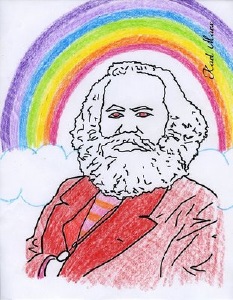 A quick recap of Marxist alienation: In das Kapital, Marx decried the alienation of man from the product of his labor, and hence from his chance for self-realization, by capital. Division of labor prevented man from actually producing anything himself; being compelled to trade his labor for wages turned him into a commodity; and the industrial factory, the apotheosis of capitalism, was worst of all because it crushes the Marxist ideal expression of labor: the artisan having near-total control over and taking direct pleasure and pride in his handicraft. [marx image via the int'l discourse coloring contest]
A quick recap of Marxist alienation: In das Kapital, Marx decried the alienation of man from the product of his labor, and hence from his chance for self-realization, by capital. Division of labor prevented man from actually producing anything himself; being compelled to trade his labor for wages turned him into a commodity; and the industrial factory, the apotheosis of capitalism, was worst of all because it crushes the Marxist ideal expression of labor: the artisan having near-total control over and taking direct pleasure and pride in his handicraft. [marx image via the int'l discourse coloring contest]
Since 1900, Binney & Smith have operated a factory in Easton, PA. The company began making paraffin crayons for use in schools under the brand name Crayola in 1903, but it really kicked it up as a cultural phenomenon in the post-war era. [The 64-color box was introduced in 1958.] The company was acquired by Hallmark, the privately held greeting card giant, in 1984 for $204 million. Binney & Smith changed its name to Crayola, LLC in 2007.
In 1981, Mister Rogers first aired a Picture Picture segment about making crayons, which was shot at the Crayola factory in Easton. Sesame Street added a nearly identical segment in 1988. The popularity of these television programs increased demand for tours of the factory, and by the late 1980's, there was reportedly a two-year waitlist for the limited slots.
The PBS factory segments generate waves of wonder for children and nostalgia for parents. But for the student of Scientific Management and the manufacturing optimization strategies known as Taylorism [named after the noted management consultant Frederick Winslow Taylor], the films are an exercise in frustration. The objective of Taylorism is to minimize labor and time inefficiencies in industrial production. And as anyone--including, apparently, some senior executives at Binney & Smith in the 1980s--could see, the Crayola production process which had been in place since after World War II was rather labor-intensive and required many hand transfers of crayon batches from one box or tray to another.
So around 1990, Crayola began modernizing its Easton factory through what it called the High Velocity Manufacturing Program. They upgraded machinery, expanded production capacity, and streamlined the labor inputs. Which helped keep the factory in the United States, but which also put the actual manufacture of crayons out of sync with the highly popular film version.
These factors concerning the factory and the factory tour resonated with the economic development challenges of Easton itself; the mayor sought to turn the city's empty downtown into a tourist destination, perhaps by creating a museum about the region's industrial history. Instead, a deal was struck to consolidate the area's most popular tourist attractions--the Crayola Factory Tour and the Canal Museum--in a city-sponsored redevelopment of a loft-like former deparment store.
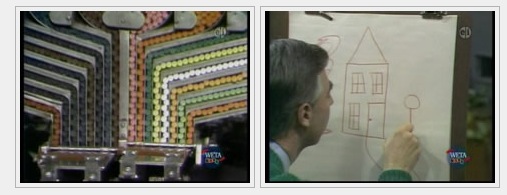
And so was born the Crayola Factory [sic] Tour. A single production line of original machinery was reassembled in a glassed-in, toplit soundstage. It is tended by a lone, young worker/performer, who demonstrates the crayonmaking process a couple of times each hour. Armed with a headset mic and a remote, he controls overhead lights and cameras and guides the audience's attention to monitors which show close-ups of each step. In other words, the entire Crayola Factory Experience is geared to the re-enactment and re-viewing of the original Mister Rogers/Sesame Street films.
But what, besides the jazzy soundtrack, is missing from this picture? In its attempt to recreate the authentic production line, which actually makes the little souvenir 4-packs of crayons handed out to the audience, Crayola has eliminated the labor. Instead of the five older, unionized workers seen in the Sesame Street film, the Factory performance is run by one young retail/service industry employee earning minimum wage.
Which sucks for the folks stuck in a depressed central [1] Pennsylvania town with nothing but retail or restaurant jobs, sure, but it doesn't let us, the shopper/viewer off the hook, either. As the very act of seeking out an authentic reliving of a memory of a TV show demonstrates. By emphasizing the production of works of culture, which we all share, Karl Mannheim expanded Marx's theory of alienation from the proletariat to everyone. These works of culture which we internalize, and with which we identify our selves, are beyond our control. Adorno and Horkheimer, meanwhile, saw capitalism exploiting this alienation, by transforming self-expression into the consumption of "cultural commodities."
Which hits Crayola twice, at least. It's not just seeing the Self in Sesame Street--and then pursuing a shared Crayola Factory Experience with the kid, thereby transmitting the alienation to a new generation. It's deepening the entrenchment of Crayola's particularly ingenious/insidious cycle of production/consumption of its own cultural commodities.
Because--hello--what is Crayola selling? It's not just crayons; it's creativity itself. Crayons are crayons, all well and good. And if Crayola is now able to leverage Baby Boomers' association of its product with idyllic childhood that's fine. But increasingly, Crayola's product offerings extend way beyond crayons of various box sizes and shapes, to encompass the entire range of child-centered craft and "creativity": markers, fabric decorating sets, paints, molding clays, colored beads, and various prepackaged kits for make-it-yourself decorate-it-yourself projects. [It's similar to how Legos are increasingly sold in movie-licensed project sets instead of in plain old bricks that facilitate open play.]
This is where the bulk of the Crayola Factory: A Hands-on Discovery Center Experience happens, in the string of six playroom/workshop areas where Crayola's many, many products are laid out for kids to play with. Except for the modeling clay, which requires a token [included in the ticket price] and the colorable stuffed animal and t-shirt kits at the end, all the consumable products in the art buffet are free. It's a hands-on, creative, art-making paradise for kids--and, you'd think, for Marxists. But each coloring/painting/drawing/rubbing/stenciling station is set up for a certain project, which requires a certain product. And the point is not to even to make something so much as to have fun trying it. The fingerpainting station only uses one color each day [It was blue when we went.] The ancient Japanese art of fish printing [?] involved painting the rubber form built into the table--either a fish or a starfish--with the color of the day [yellow] and then pressing your paper against it.
In place of actual imaginative play or artmaking, the CF:AH-oDC facilitated a highly circumscribed simulation, a try-before-you-buy product demo. It's an advanced incarnation of the kind of falsified consumption Stuart Hall described, where factory visitors are lulled by the cultural commodifier into "think[ing] that the visual sign actually is what it represents to be," i.e., a crayon factory, their TV memory, or in this particular case, mind-expanding, open artmaking. And of course, the kids don't mind a bit; they're having a blast. And they don't particularly care what they produce; they can't wait to hand off half-finished coloring book pages and gloopy paintings for the quick-dryer so they can move on to the next station.
It's rough enough when this critique of the Baudrillardian Spectacle by Douglas Kellner and Steven Best sounds like the elevator pitch for the TCF:AH-oDC itself:
Consumers pay for the spectacles of entertainment, subsidized by advertising, in the form of higher costs for products. Moreover, the entertainment and information offered is a function of what the culture industries think will sell and that on the whole advances its own interests, producing more desires for its goods and way of life.It's even worse when the corporate overlords even co-opt the activist philosophers' supposed antidote:The correlative to the Spectacle is thus the Spectator, the passive viewer and consumer of a social system predicated on submission and conformity.
In contrast to the stupor of consumption, Debord and the Situationists champion active, creative, and imaginative practice, in which individuals create their own "situations," their own passionate existential events, fully participating in the production of everyday life, their own individuality, and, ultimately, a new society.And the crayon company that'll bring it to you? Crayola.
Is all this too much? Maybe/probably/yeah, but maybe not. The pure video simulation of the factory tour was obvious to me immediately, if only because I've blogged so extensively about the particular video clips being re-enacted. But it really started to gell when I took K2 into the baby/toddler play area, a neglected [because product-free?] corner of the Hands-on Discovery Center side, which contained only a couple of brightly colored floor mats and a ball drop machine.
Kids would take a ball from the bin, and walk it over to a hopper, where it dropped onto a lift, then transferred to a rail high overhead, before dropping back down a pegboard wall into the bin. Then they'd pick the balls back up and start the whole process over again. I noticed kids under 2yo--like K2--really were not following the ball and making the causal connection of their action. The ball would disappear into a box before hitting the elevator; the track was really, really high--like 12 feet high--and bright spotlights made it hard to see the small balls.
Here it was, I thought, the most authentic Factory Experience possible: setting kids to work doing a pointless, repetitive task they didn't understand for little or no reward. And then just like a Taylorist consultant seeing an inefficient crayonmaking process, I found myself wanting to redesign the ball drop to give these ecstatic little kids a clearer, more immediate, and more visceral sense of accomplishment. In other words, I wanted to alleviate their alienation from the product of their labor.
Too much? Or not enough? I've looked for two months to find any kind of actual, academic analysis of this type of factory simulation-as-entertainment retail, or about this type of parent-nostalgia-centered marketing of childhood, or even of the actual outcomes when manufacturing-based economies are displaced by tourism/leisure/retail. The Smithsonian only managed a romantic love letter to Crayola; and the rest of the media only deals with Crayola and the TCF:AH-oDC as a family travel destination [interestingly, almost every newspaper article begins with the warning that the Crayola Factory is not actually a factory. Which didn't keep Crayola from topping the list of awesome factory tours in Delta's in-flight magazine last month.]
Otherwise, All I could find was a rather hapless paragraph in George Ritzer's 2004 book, Enchanting a disenchanted world: revolutionizing the means of consumption. Ritzer does manage to put some real world meat on the scrawny theoretical bones of Debordian spectacle. But even with more than a decade to think about the closure of Kellogg's "'real' factory tour" in the 1990s and its replacement by Kellogg's Cereal City USA, the best he can do is put scare quotes around "'Kellogg Themed' merchandise" and bemoan the fact that these "corporate amusement parks" are "less demanding than the Metropolitan Museum of Art."
It's almost as if no one who doesn't have a product to sell or an axe to grind takes the world of children and childhood all that seriously. Maybe all I really needed is someone to understand my feelings, particularly the tug in my heart in the Factory [sic] Store, after we'd stocked up on clay, and filled our collectible tins with our very own custom-mixed crayon assortments, when I saw them: the boxes.
Scattered around the base of the world's biggest crayon [made, as we were reminded several times, by Mister Rogers and his Child Army], were beat up crates, "Original Stock Boxes," which bore a "certificate of authenticity" confirming that, though they were "discontinued use in 1996." they had been "used in the Crayola Factory in the 20th century." And only $30! It took a good ten minutes of shopping and patina grading and dating for me to figure out that I had absolutely no desire and no use whatsoever for an Original Stock Box. And yet, there I was, a Marxist/satirist MBA dad with a 90-minute drive ahead of him, wanting a literal piece of garbage because it was just like in the movie. [No, I didn't buy one. But if you did, I'd love to hear how you're using it!]
[1] as several commenters pointed out, and I as I should have been aware, since I knew that that was New Jersey right there on the other side of the river, Easton is in eastern Pennsylvania, not central Pennsylvania. I could pretend I really meant, "central to both Philadelphia and New York," but the hard truth is, as someone who lived in Philadelphia for two years and never went out the Main Line, and who lives in his mind along the NYC-DC axis [aka, the NJ Turnpike], I probably just equated "central" and "middle of nowhere" in my mind. If I offended any Eastoners by lumping you in with Harrisburg or wherever, I apologize.
update: I am embarrassed to have missed it at the time, but MetaFilter had a great discussion of this post in 2010. It's archived here.

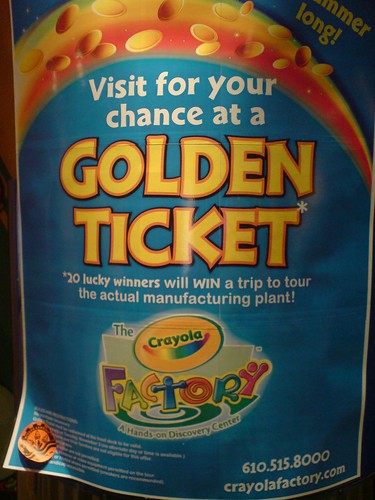
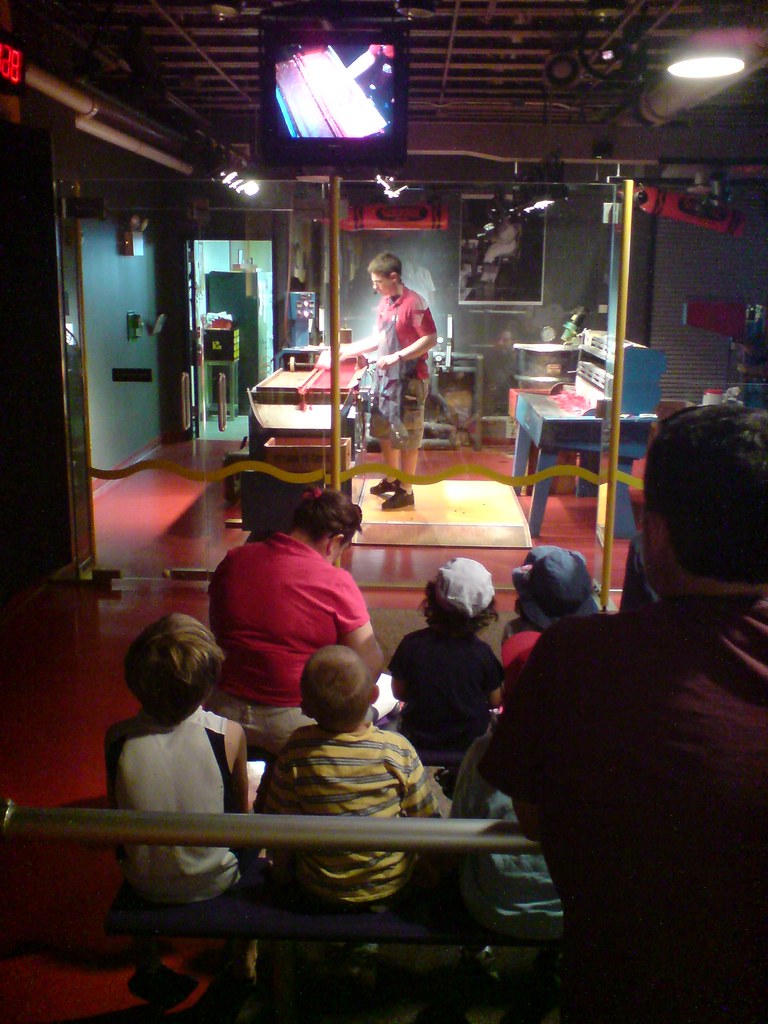

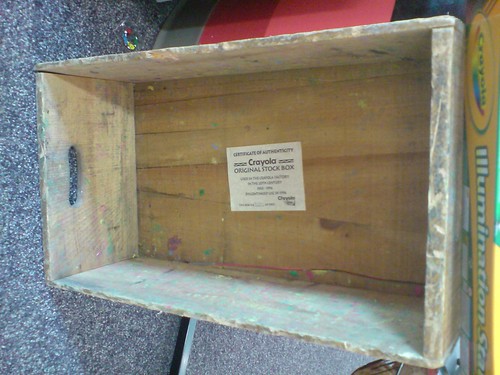
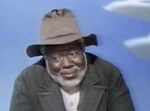


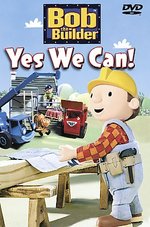
wow, thanks for a fascinating read. Layers upon layers of things to ponder. I doubt you'll be anywhere near Salem, OR any time soon, but this:
"It's almost as if no one who doesn't have a product to sell or an axe to grind takes the world of children and childhood all that seriously."
made me think of a great place you might wanna check out with your kids if you're ever in the Pacific NW.... Last weekend, we took a family trip camping near Salem, and on the way home, stopped off at the Gilbert House with our 2 kids (aged 18-mo and 3). it's this renovated house of the guy who invented Erector Sets, and is just a loose assemblage of kid-friendly things, from a giant Erector set in the backyard for climbing, to a room filled with bubble-making paraphenalia, to various rooms and outdoor structures -- not trying to sell you anything, just there for kids' amusement and experimentation.
Shockingly, I don't think the place even had a gift shop!
I love your analyis! Puts my unease with this kind of thing into its historical perspective. Just on this though:
"It's almost as if no one who doesn't have a product to sell or an axe to grind takes the world of children and childhood all that seriously."
I don't you're hitting the mail on the head here. There's plenty of kids stuff on the internet (like the music blogs zooglobble and kidsmusicthatrocks) that isn't trying to sell anything. And there's corporate themeparks that aren't aimed at kids - corporations are after your money (and your soul) no matter what age you are
Golly, very nice. Some random thoughts:
--I recall visiting the Hershey factory in the Seventies, complete with drowned-in-the-vat horror stories. The free sacks of broken chocolate they handed out at the end weren't bad, either.
--I rather wonder if they're filming all this as market research?
--On Sunday, Xavier and myself were wading in a pond. "Where is the pond?" he asked, two-and-a-halfishly.
We're in the pond," I answered. "Or was that an existential question?"
"What's existential?"
It's scary how we've been trained as parents as to which activities are appropriate for kids. The training has been done by people focused on getting us to buy their stuff. It seems like there may have been a real alternative to Crayola right upstairs at the National Canal Museum. I've never been but I'm pretty sure my kids would get just as much of a kick out of watching how a canals were constructed and utilized as they would watching someone make a crayon. I imagine videos, pictures and models depicting construction equipment, horses, boats and trains. Kids eat this stuff up. But there's nothing to sell to them/us so we've been conditioned to limit those activities that are deemed kid appropriate to those that integrate kids brands.
Best post ever? Yes.
Can we get Derida on the McDonald's playgrounds or the LSI hegemony?
No kidding. I went into the Canal Museum gift shop looking to see if they had something interesting and local and historic for sale, and it was wall-to-wall generic museum shop crap: cutesy, pseudo-educational, pseudo-crafty junk that I imagine came from the buyer's annual trip to the Museum Gift Shop Fair at the Javitz Center.
For us, we have the C&O Canal right in the middle of Georgetown, so we can watch a lock open or a donkey pulling or talk to a Park Service employee in old-timey clothing any time we want.
Wait, did you travel three hours and miss the canal museum completely? I much preferred its hands on activities to Crayola. Hope you had some Purple Cow ice cream!
http://www.savvygrouse.com/2009/07/03/twokidsattworiverslanding/
Hey you know, I kind of want one of those boxes, and I never saw the movie.
I reckon your post is the most that a parent could evenr have expected to extract from this museum visit, and I applaud you for that. It just goes to show that life is truly everywhere.
And you've answered my question of why the crayons are such crap now, compared to what they were.
I second what Tim wrote. The Canal Museum is the far better choice in that building. It's too bad it's mostly an afterthought for most visitors.
Great read! Thank you. Very thought provoking and quite well written.
Small note... "central" Pennsylvania? We're on the eastern border with NJ! >8)
Sometimes, my friend, a Crayola is just a crayon.
I have no children. I only vaguely remember growing up in Soviet Russia. And my Crayolas were taken away from me when my parents realized I was trying to eat them because they smelled good. Therefore, I shouldn't be able to relate to or enjoy your post. But I do. Your combination of Crayola, communism, and even Taylor (who I researched thoroughly on an internship that had to do with measuring knowledge worker productivity) is amazing. Thank you, sir, for your wit and post.
Sorry, still trying to swallow the concept of a Canal Museum being relocated from a canal (its natural habitat one might think) to the third floor of a redeveloped department store. I suppose this is part of the continuing process of industrial reuse.
Nice report though - thanks
Without getting in too deep, the more mechanized labor becomes, the more transparent labor alienation is, then more explicit exploitation has to be. For the dedicated revolutionary, this is a good thing. That's what your kid should have learned
re the transparency, perhaps this is why the ball machine was so fun; the kids were reveling in the sheer irrefutability of their own exploitation.
Meanwhile, here's a comment from William P, who had trouble with the captcha process:
Very interesting. Thanks for posting this!
I see three further directions that I'd love to see you (or anybody) take this line of thought.
One is Orlov's notion of the fuffle. It's an artifact made in response to people who demand to be fooled: http://cluborlov.blogspot.com/2009/03/welcome-to-fuffland.html
The second is extending the line of thought in to the product creation / marketing side. I don't know beans about Crayola, but one of the common complaints I hear from entrepreneur friends is how sharply they are constrained by demand. It could well be that the people at Crayola try to make and sell the less specific, less consumption-oriented products, but that not enough people buy them to make them economical.
The third is a Marx-flavored look at how Lean Manufacturing changes the picture. By the name you might think it's focused on lowering cost, but that's not the case. The aspect I think is interesting here is how much they focus on re-engaging the worker in the collective enterprise of creating something valuable for real people. Although I doubt they think of it in those terms, it seems to directly address the concerns behind Marxist alienation.
Wonderful post! It got me rethinking about the relevance of Marxism for some of the things I care about (Wikipedia and free culture), and I just blogged a not-quite-response:
http://ragesoss.com/blog/?p=250
Your post is really a great introduction to a lot of useful ideas, and it shows that Theory can actually be accessible (even if in practice it rarely is). If only academic Marxists could write so well.
Wow, first day of Kindergarden for K2 and DT produces a full-on treatise.
I can't wait for my little one to start school-- maybe then I can get back to work on my novel. Great work.
oops, that would be "kindergarten." My novel is going to need an editor it seems,
yeah, actually, I killed my Labor Day to get it out.
I see a lot of fair points, but I disagree with your casual dismissal of the Canal Museum. From a response I posted over at our Easton-area blog: "That place has some excellent exhibits and toys -- not the least of which is a miniature canal system with working locks and boats. I could play at that thing all day, even if my kids weren’t with me."
Also, you get some key things wrong about our fair city, the "depressed central Pennsylvania town with nothing but retail or restaurant jobs."
First, City of Easton is at the very eastern edge of Pennsylvania, not in central PA. And also ... well, there’s not much left here in the way of retail jobs. (The "depressed" part is about right.)
More here.
I've added a correction/explanation on my "central PA" error. And after so many ringing endorsements, I'm happy to put the National Canal Museum at the top of my Most Underappreciated Awesome Museums list.
I was just trying to capture the reality of my own experience as someone who had never heard jack about a NCM, and who thought a 3rd floor of a department store seemed like an odd place to put one. The Crayola brand is clearly the draw there in downtown Easton, even if the canals are the big reward.
You wrote: The Crayola brand is clearly the draw there in downtown Easton
You're absolutely correct about that part. Also, they could probably also do a better job promoting the Canal Museum; a lot of Crayola visitors do skip it.
Lighten up, Francis